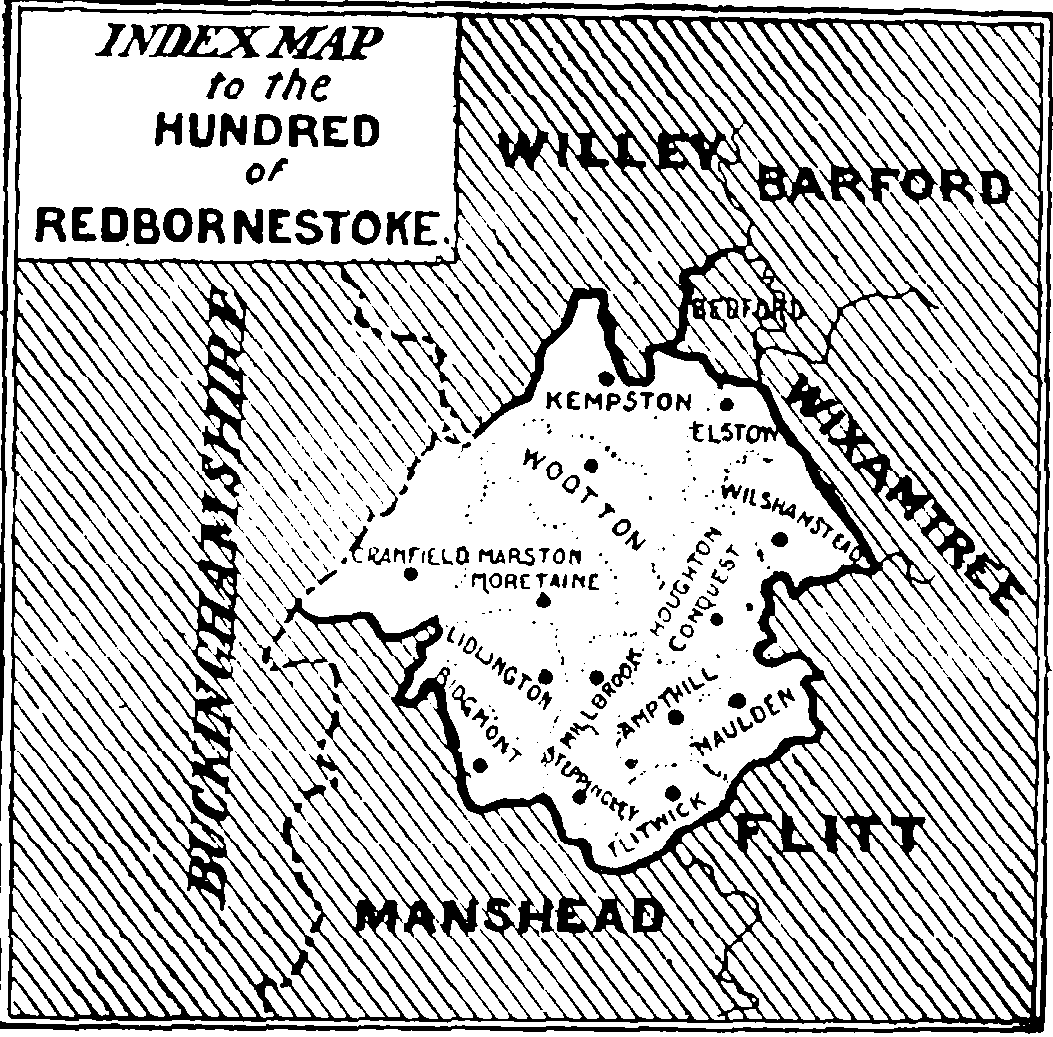A History of the County of Bedford: Volume 3. Originally published by Victoria County History, London, 1912.
This free content was digitised by double rekeying. All rights reserved.
'The hundred of Redbornestoke: Introduction', in A History of the County of Bedford: Volume 3, ed. William Page (London, 1912), British History Online https://prod.british-history.ac.uk/vch/beds/vol3/p267 [accessed 19 April 2025].
'The hundred of Redbornestoke: Introduction', in A History of the County of Bedford: Volume 3. Edited by William Page (London, 1912), British History Online, accessed April 19, 2025, https://prod.british-history.ac.uk/vch/beds/vol3/p267.
"The hundred of Redbornestoke: Introduction". A History of the County of Bedford: Volume 3. Ed. William Page (London, 1912), British History Online. Web. 19 April 2025. https://prod.british-history.ac.uk/vch/beds/vol3/p267.
THE HUNDRED OF REDBORNESTOKE
CONTAINING THE PARISHES OF
| AMPTHILL | MARSTON MORETAINE |
| CRANFIELD | MAULDEN |
| ELSTOW | MILLBROOK |
| FLITWICK | RIDGMONT |
| HOUGHTON CONQUEST | STEPPINGLEY |
| KEMPSTON | WILSHAMSTEAD |
| LIDLINGTON | WOOTTON (fn. 1) |
This hundred contained the above-named parishes at the Survey of 1086, when Ridgmont was included in Segenhoe, now its dependent hamlet. Its area for assessment was then 114¼ hides, exclusive of 5 hides in Broom, at present included in Wixamtree Hundred. (fn. 2)

INDEX MAP to the HUNDRED of REDBORNESTOKE.
Redbornestoke has always been a royal hundred, and was farmed by bailiffs appointed by the Crown. A very early Subsidy Roll (c. 1237) exists for this hundred, when 549 persons, whose names are recorded, subscribed. (fn. 3) Its value in 1246 was £11 16s. 2d. (fn. 4) In 1284 it was assessed for a feudal aid at 13½ fees and 5 hides. (fn. 5)
In 1613 the office of bailiff and the perquisites of the hundred courts were granted to Edward Lord Bruce for three lives. (fn. 6) In an assessment for ship-money in 1638 the hundred paid £21 19s. 5d., ninety-two persons contributing. (fn. 7) In 1651 a survey was made of Redbornestoke as part of the possessions of Charles Stuart, late King of England. It was then worth £13 6s., which was derived partly from 'certanty money' paid by the freeholders of the various townships, and partly from the profits (£3) of 'waifs, strays, deodands, fugitives, condemned persons, hawking, hunting, fishing and fowling.' The hundred was not at this time under demise, and the various rents were collected by the constables of the towns, who paid them to the bailiff of the hundred. The jurisdiction of the hundred was declared not to interfere with the manorial courts leet within the hundred. (fn. 8)
In a report made on this hundred in 1831 its acreage was declared to be 38,037 and its population 13,360. (fn. 9)